
































February 2024 • Volume 13, No. 4
CEO Michael Shepard
VICE PRESIDENT OF CONTENT Leon Espinoza
EDITORIAL DIRECTOR Mike Teegarden, CCC
DEPUTY EDITORIAL DIRECTOR
Noble Sprayberry
SENIOR EDITOR Jennifer Paton, CCC
FLORIDA CURRENTS EDITORS
Chasity Anderson, CCC; Valeri Pearon
ASSISTANT EDITORS Victoria Hampton, CCC;
David Herder, CCC
ASSOCIATE EDITOR
Nina Todea
PUBLICATIONS PRODUCTION
SENIOR MANAGER
Elizabeth Beatty
PUBLICATIONS COORDINATOR
Alyssa McDougle
Members acknowledge that $4.31 a year, plus postage, is the cost to publish 12 issues a year of FLORIDA CURRENTS ISSN 23276304 (USPS 8300). Published by Pioneer Utility Resources Inc., 5625 NE Elam Young Pkwy. Ste. 100, Hillsboro, OR 97124—a not-for-profit Oregon cooperative corporation—the magazine serves the communication needs of consumerowned electric utilities in Florida. Preferred Periodicals postage paid at Hillsboro, OR 97123 and at additional mailing offices.
Postmaster: Send address changes to 5625 NE Elam Young Pkwy., Ste. 100, Hillsboro, OR 97124-6422.
HOW TO CONTACT FLORIDA CURRENTS
Subscription services:
Nonmember subscriptions $15 U.S. a year; $25 foreign a year. Prepayment required. Allow 4-8 weeks for first issue. Identify local edition desired. Have a problem receiving your magazine? Utility members should contact their utility office. Nonmembers call 503-357-2105 or email mailingdept@pioneer.coop. Back issues:
Back issues and extra copies are $3 each, prepayment required. Supply is limited. Identify edition, month and year. Call first to check availability. Contact Pioneer Utility Resources: P.O. Box 1306, North Plains, OR 97133-1306; 503-357-2105; email: mailingdept@pioneer.coop.
DISPLAY ADVERTISING INQUIRIES
American MainStreet Publications 611 S. Congress Ave. Ste. 504 Austin, TX 78704-1714; 800-626-1181 or 512-441-5200; amp.coop.
© 2024 Pioneer Utility Resources. All rights reserved. Reproduction in whole or in part without written permission is prohibited. Direct reprint requests to editor@floridacurrents.com or for more information, visit www.pioneer.coop.
For additional content, search @FloridaCurrents on your favorite social media sites and floridacurrents.com.

Utility scammers are getting craftier. Protect yourself by following these tips:
• Slow down. If you’re being rushed to give personal information or make a payment, it’s a scam.
• Verify. Make sure the call or email comes from Peace River Electric Cooperative. Unsure? Hang up and call the co-op directly at 800-282-3824.
• Stop. Think before you act. If something sounds unsafe or incorrect, it probably is.
Source: Utilities United Against Scams

Lives Hummingbirds thrive from Alaska to Florida Up Close, Page 10
Plucky Companions Families flock to raise backyard chickens Spotlight, Page 12
Comfort in a Bowl of Soup In the Kitchen, Page 16

Peace River Electric Cooperative members in Districts 2, 5 and 8 are invited to attend their district meeting this month.
District 2
February 8
PRECO Headquarters
Wauchula
District 5
February 5
PRECO Headquarters
Wauchula
District 8
February 6
Saint Frances
Cabrini Church
Parrish
District Meeting Reminders
X Must have photo ID to register.
X Your district number is listed on your electric bill.
X For faster registration, please bring the meeting notification flyer you receive in the mail.
X Only authorized individuals designated on the account may register on behalf of a business.
X No smoking, alcohol or pets (service animals only) are allowed at the meetings. Photos will be taken for publications/social media.
Members of these districts will receive a flyer with additional details.
The membership meetings include door prize drawings and light refreshments. Registered members receive a $10 electric bill credit and entry into the grand-prize drawing for the chance to win a $100 Visa gift card. One winner per district will be randomly selected during drawings on February 16. n
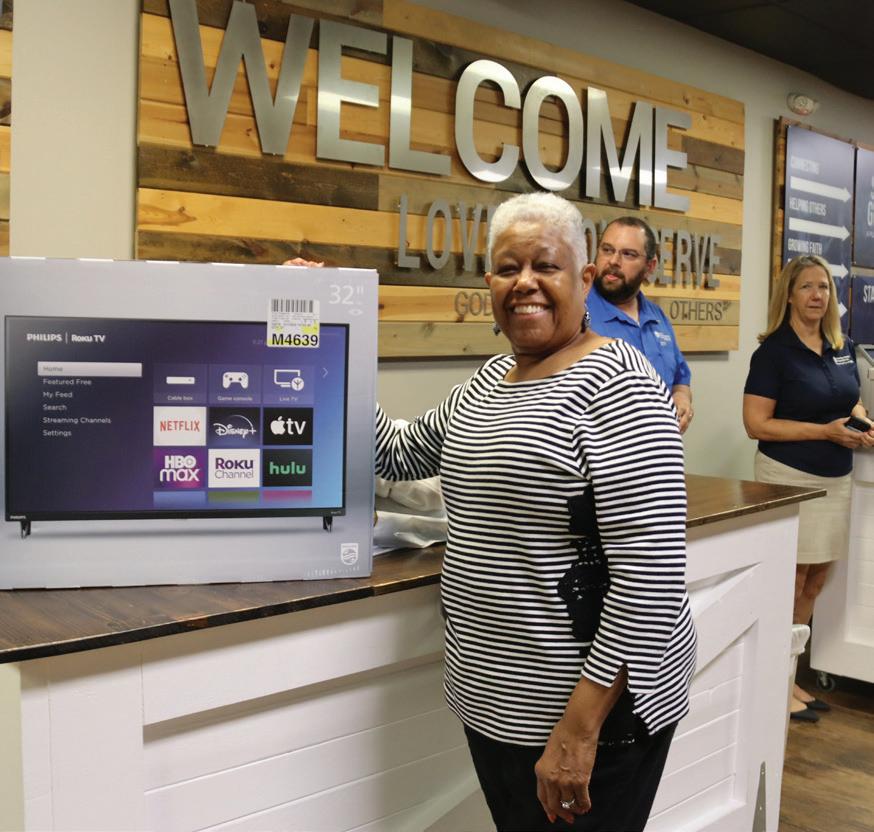
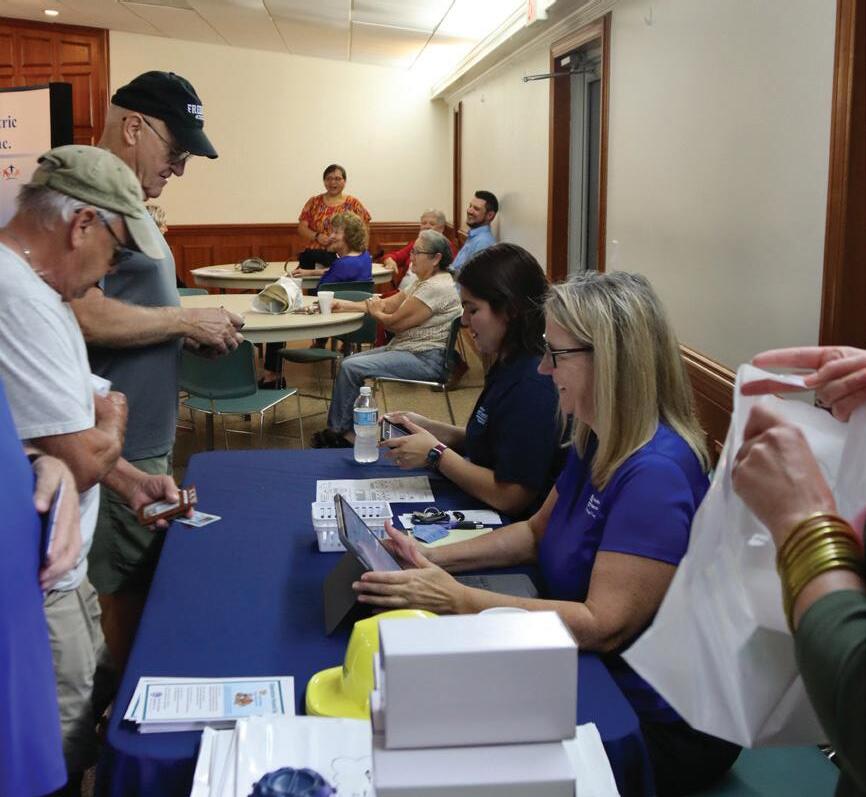
SAVE THE DATE
Peace River Electric Cooperative
Annual Membership Meeting
PRECO MEMBERS ARE INVITED SATURDAY, MARCH 16
Registration opens at 10 a.m.
PRECO Park, 220 Knight Road, Wauchula
ENJOY FOR FREE:
• Hot Dogs
• Fries
• Soft Drinks
• Ice Cream
• Kettle Corn

• Funnel Cakes
• Kids Play Area
• Live Music
• Antique Car Show
• Educational Booths
Plus, there are great door prize drawings for registered PRECO members.
Bring your photo ID to register!
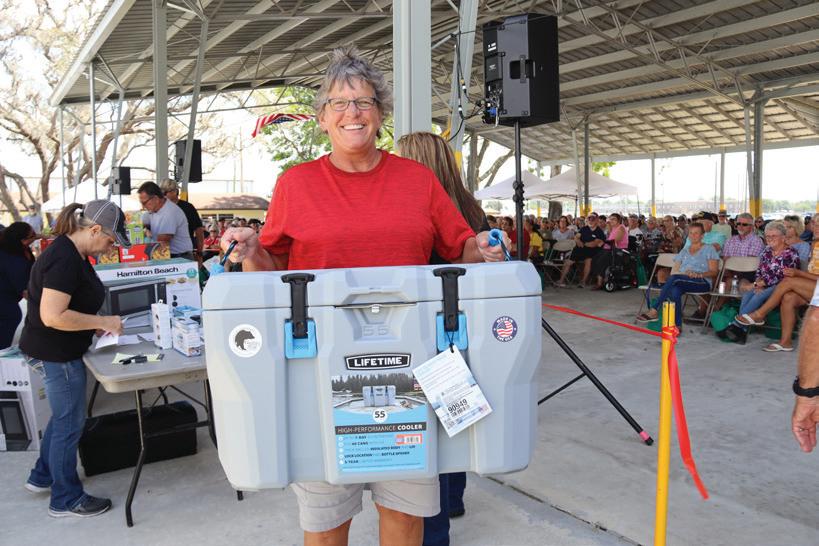
Door Prize Drawings
Special Entertainment
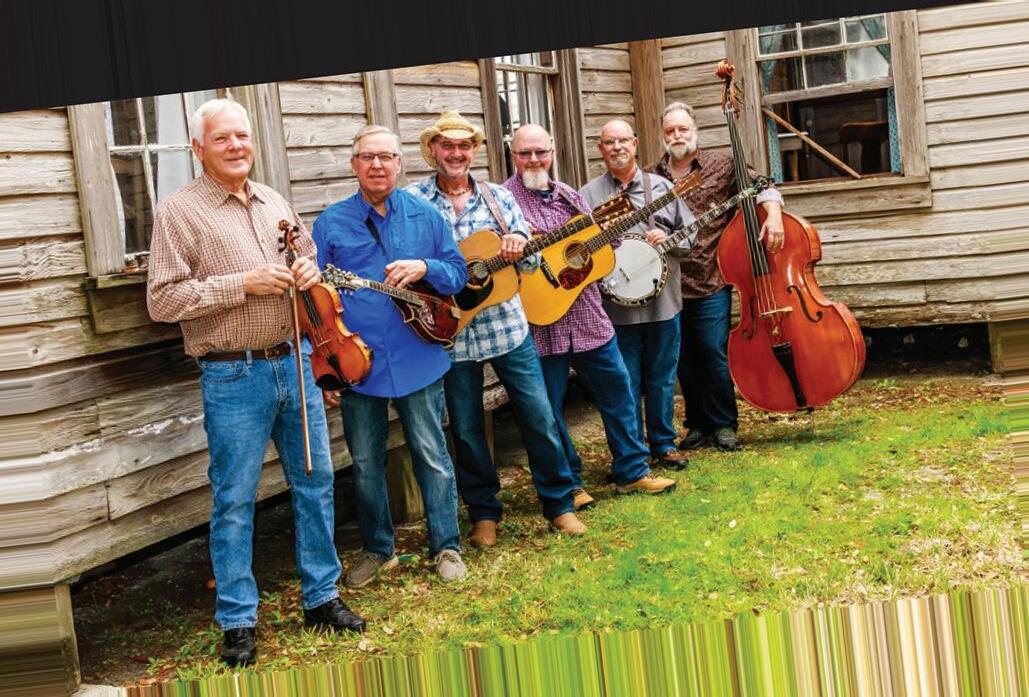
Southern Express Bluegrass Band Southern Express, made up of six multitalented musicians, is an annual meeting fan favorite. Your entire family will enjoy the band’s unique blend of bluegrass, gospel and country music.

Simple Faith Hailing from Largo, Florida, Simple Faith is passionate about sharing southern gospel music. This men’s quartet makes the most of their God-given talents by inspiring listeners.

Antique Car Show
Back by popular demand, antique car enthusiasts and owners display their classic vehicles for your enjoyment. Do you have a classic car you’d like to bring? Contact us at 800-282-3824, ext. 4636.








By Jennah Denney
Every home has an electrical panel, otherwise known as a breaker box. The design hasn’t changed much over the years, but the smart technology-enabled electrical panel is innovating this household appliance.
Smart breaker boxes—which can operate on their own or in conjunction with a standard electrical panel—are an alternative for households looking to save energy.
Upgrading to smart breaker boxes can make people’s home electrical systems safer and more reliable. It’s recommended to hire a qualified electrician to install the smart panel, which can be done using a home’s existing electrical wiring and infrastructure.
Many smart breaker boxes are designed to easily connect to other smart devices in your home. With the capacity to remotely monitor and adjust energy consumption, these devices provide several advantages that make them a worthwhile investment for anyone looking to consume less energy.

One advantage smart breaker boxes provide is convenience for homeowners to monitor and control how much energy they use.
With smart circuit breakers, you can receive real-time data that allows you to pinpoint appliances or devices that consume excessive energy. This real-time tracking allows consumers to adjust their energy use where needed, which ultimately saves money on monthly energy bills, reduces energy waste and is good for the electric grid.
Smart breaker boxes are all about managing your electric load. While the technology to track how much energy a home uses has been available for years, the ability to control how that energy is used is new. A smart breaker box can reveal how much power each circuit is using and turn each one on or off.

Some smart breaker boxes allow you to establish schedules based on importance, such as refrigeration and heat to be on 24/7, but less important loads like Wi-Fi or the television to turn off during scheduled times when no one is home.
Smart breaker boxes offer additional benefits for those with home solar systems. Smart breaker boxes help solar energy systems run more efficiently by determining how much energy is being used and how it can be stored. Through intelligent load management, they can provide longer battery backup life for those with energy storage.
Additionally, integration with other smart home devices, like thermostats and virtual assistants, further enhances the connected-home ecosystem.
Safety in electrical devices is highly important to consumers, and smart breaker boxes provide enhanced safety features that consumers appreciate. Smart breaker boxes can identify abnormalities



and other potential electrical problems, then quickly shut off power supply if a circuit shorts or becomes overloaded, avoiding electrical fires and other dangers. Many smart breaker boxes include surge protection to help protect against power spikes and other issues.

Smart breaker boxes aren’t just for consumers—electric utilities are using them, too. A primary advantage of these devices is that they allow for more efficient and reliable energy distribution. With the ability to detect faults within the system, electric utilities can quickly respond to issues and minimize outage times for consumers—ultimately managing the grid more efficiently.
There’s no denying smart home technologies have changed how we manage homes, and smart breaker boxes are no exception. Smart breaker boxes help electric consumers and utilities in multiple ways.
With advanced safety features, realtime energy tracking and control, and the ability to use energy more efficiently, these devices are a smart investment for anyone who wants to make their home’s system more reliable, safer and costeffective.

When adding new smart devices to your home, replace the default usernames and passwords with strong unique versions, and keep software up
By Michael Leitman
Once pursued by only the most tech savvy of consumers, smart home technologies are becoming increasingly common to enhance home convenience, comfort and safety.
Smart technologies have proliferated as the “internet of things” have grown to include home security and safety systems, lighting, entertainment, HVAC systems and appliances.
Consumers are interested in a variety of technology combinations and uses for their homes. Regardless of the applications, here are three key tips to keep in mind when integrating smart technologies into your home.
Ensure devices can communicate with each other. This might seem like a no-brainer, but compatibility is vital to ensuring convenience is not overcome by annoyance. One way of ensuring compatibility is choosing a single brand for as many applications as possible. Another option is a central hub to coordinate and control various devices. Many of the hubs available today offer additional features as well, including speakers, routers or displays.
One major consideration for all these technologies is a fast and reliable internet and Wi-Fi connection.
Enable all security measures to prevent hacking. Adding smart devices to your home can increase the surface area that bad actors can use to hack equipment, increasing the importance of cybersecurity measures. Reduce risks by choosing smart devices with built-in security features and ensuring these features are all turned on. It is also important to replace default usernames and passwords with strong unique versions, enabling dual and/or biometric authentication, and running software updates when available.
If you are controlling your home devices from your phone, tablet or laptop, do not do so while using unsecured public Wi-Fi networks.
Look for technologies to help control and manage home energy use. Smart home technologies can be a great way to control and manage home energy use. If you are looking into home automation, devices like smart thermostats, grid controllable water heaters, and schedulable or motion-controlled indoor and outdoor lighting can be smart ways to save money on your electric bill.
When used wisely and efficiently, smart home technologies can add great convenience to everyday life. Keep these tips in mind as you integrate smart devices into your home.

Apply by February 29 for continuing education funds from Operation Round Up
Hey, college-bound students: Don’t let the financial burden of pursuing your education hold you back. Peace River Electric Cooperative’s Operation Round Up Scholarship is here to help. ORU’s board of directors set aside $106,000 to help deserving students like you.
Scholarship applications are available for prospective and currently enrolled students of all ages at accredited colleges, trade, technical or vocational schools. Those eligible are:
• PRECO members and their dependent children.
PRECO launched Operation Round Up in 2005.
As of 2023, the charitable foundation has granted $1,235,500 in college scholarships to 257 area students.
• Students in high school who are approaching graduation.
• Adults or students already attending college.
• Trade, technical and vocational students.
Offered are four-year scholarships of up to $8,000 and two-year scholarships of up to $4,000.
Complete an application at PRECO.coop/community/scholarships. A high school or college transcript is required. Transcript requests take time to process, so contact your institution right away. Your transcript can arrive before you apply online.
Applications must be received by PRECO no later than February 29. Transcripts must be received by mail no later than March 7. Some restrictions apply. See the scholarship application for details. n


“Now Jack can control the volume on his TV•Ears while I set the TV volume or mute it for complete quiet. Once again, he can understand every word and we can watch our favorite TV shows together.” — Darlene & Jack B., CA A Better Way to hearTV®

Doctor recommended TV•Ears powerful assistive listening device has helped millions of people enjoy their favorite television shows, movies, and streaming content without disturbing others.
Voice Clarifying Audio® works better than hearing aids for watching TV as it eliminates background noise and boosts hard to hear television dialog making voices, whispers, and accents understandable.
120db of volume provides extra power not found in hearing aids or regular TV headphones. Hear as loud as you want on the headset while others listen at a comfortable volume.

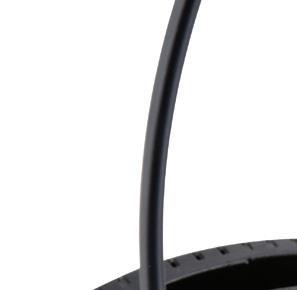









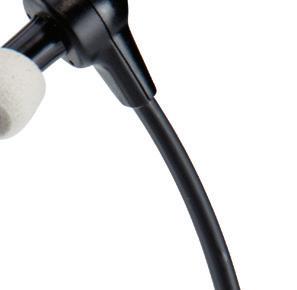






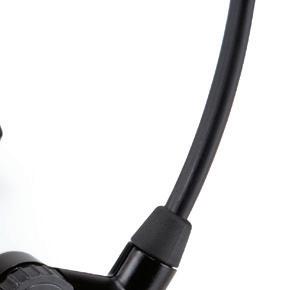


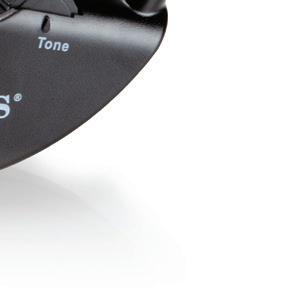
With steady hands, Fred Bassett gently clamps a tiny, lightweight metal band with identification numbers above a hummingbird’s foot.


By Dianna Troyer





home state of Alabama and travels throughout the Southeast, especially Florida.
As he gently handles the high-energy bird, it becomes subdued.



“I never get tired of doing this,” he says, talking to appreciative observers in the shady yard of a rural home in Southeastern Idaho. They watch him weigh and measure the length of a male, black-chinned hummingbird.
this
“It’s not like doing this is any kind of hardship,” says Fred, 77, a certified master bird bander. He is among only 125 people nationwide with a master banding permit issued by the Bird
Banding Laboratory through the U.S. Geological Survey.



“You can feel their heartbeat—about 600 beats a minute when they’re calm and 1,200 beats when they’re exerting themselves,” he says, gently depositing the bird in the outstretched palm of an awestruck onlooker.
“If your heart does that, you’d be in a heap o’ trouble,” Fred says, laughing. The bird seems to be napping, his iridescent plumage hypnotizing observers. Eventually, he zooms away.
Mission

During winter, Fred

is based in his








After retiring as an Air Force pilot, Fred discovered a new calling when friends taught him to band hummingbirds. Since 1997, he has made it his mission to band the diminutive birds, teach others how to do it and educate observers wherever he travels. He has banded more than 35,000 hummingbirds at 1,400 locations in 17 states.
Fred notes each bird’s species, gender, length, weight and band number. The information goes into the Bird Banding Laboratory’s database. Generally, North American hummingbirds weigh 0.1 to 0.2 ounces and are 3 to 4 inches long with a wingspan of about 3 to 4 inches.
To share what he’s learned, Fred founded hummingbirdresearch.net and has posted videos titled “Hummingbirds with Fred Bassett” on YouTube.





“You’re the lucky ones out here in the West because you routinely see broadtailed, calliope, black-chinned and rufous,” he says. “Back East, the ruby-throated hummingbird is dominant.”
Insatiable Appetites
Generally, Fred bands about 70 to 80 birds daily, with several returning in the same day.
“If you want to put up a feeder, remember it’s one part sugar to four parts water and no honey or red food coloring,” he says.
At the Southeastern Idaho home in midsummer, the tiny birds with voracious appetites gobble nearly 3 gallons of sugar water daily at 10 one-quart feeders hung throughout the yard. By late July, young birds have fledged.
Sometimes, more than 100 birds dive and hover every evening. To satisfy their seemingly insatiable hunger, the homeowners buy 250 pounds of sugar from spring to fall. The feeders are left up through October because some stragglers are still migrating.

As he bands the birds, Fred describes their remarkable lives. After building a nest of soft plant fibers, twigs and fresh spiderwebs, a female often shingles the exterior with tiny bits of leaves. Her two eggs, each about the size of a Tic Tac,

the characteristic humming sound.
“Their shoulders rotate 360 degrees, so they can hover and fly any direction— even backward,” Fred says. “They make pilots jealous.”
Remarkable Stamina
Hummingbirds are speedy fliers, zooming up to 37 mph and up to 60 mph in courtship dives. The ruby-throated hummingbird often doubles its weight and migrates alone, flying nonstop 600 miles across the Gulf of Mexico in 18 to 24 hours, depending on the weather.

After banding, Fred gently deposits the bird in an appreciative birdwatcher’s palm.
says. “I tell them they can believe whatever
“People tell me that’s impossible,” Fred
some record-setting birds defy those odds and live as long as 13 years, according to information at hummingbirdresearch.net.
Eventually, new technology may supplement the bands, Fred says. A lightweight battery-powered tracking device is being developed for the birds to wear, enabling researchers to pinpoint their daily movements and migration routes.

“Whenever that’s accomplished, we’ll have a heap of new insights and learn just how much we didn’t know,” he says, grinning.
More information is at Hummingbirds with Fred Bassett, Summer and Winter, on YouTube and at hummingbirdresearch.net.


In Lakeland, Florida, a male ruby-throated hummingbird
Fred Bassett banded January 24, 2014, was located four years later in Canada. A bird bander found it May 27, 2018, in Utopia, New Brunswick—a trek of 1,700 miles. It was the first wintering ruby-throated hummingbird found at its breeding area.
A female rufous hummingbird set the record of 3,500 miles for banding and recapture—from Tallahassee, Florida, to Chenega Bay, Alaska. Fred Dietrich banded her January 13, 2010, in Florida. Five months later, June 28, 2010, she was found by fellow bander Kate McLaughlin in Alaska. Visit www.hummingbirdresearch.net under the hot news tab to learn more.
A male calliope hummingbird’s bright feathers attract females. PHOTO COURTESY OF FRED






By Jen Calhoun



For the Drake family, including Riley, owning chickens is a learning experience. The lessons include biology and how to tend to a bird with minor injuries. PHOTOS COURTESY OF BECKY AND JIM DRAKE




Bobbi Drake was visiting with a friend when a chicken popped onto her friend’s lap. The sight made her laugh.
“I said, ‘Wow! These are fun chickens.’”
Her friend agreed.
“I’d rather have chickens than a dog or a cat,” the friend said. “They’re too much trouble. But these chickens? They’re great.”
Not long after, Bobbi and her husband, Rod, bought a few chicks for their backyard in Polk County. Now, Tillie, Millie and Lillie—a Plymouth Rock and two buff Orpingtons— live the good life along Lake Hatchineha. They, too, like to hop on laps for a cuddle.
As retirees, the couple have found their hens to be a good fit.
“I didn’t want a dog, and I didn’t want a cat,” Bobbi says. “They don’t shed in the house, and they don’t have to be potty-trained. I’d been there and done that, so I thought I’d try these chickens. I really enjoy them.”
It’s a familiar story for Osceola County Extension Agent Jessica Sullivan, who’s seen an increase in families keeping backyard chickens in recent years.
“Absolutely, people are treating them like pets,” she says with a laugh. “Just like a dog or a cat, people can get very attached to chickens. They spend a lot of time with them and even cuddle with them.”
Some even build or buy what Jessica likes to call boutique chicken coops.
“They’ll make them super cute and paint them really pretty,” she says. “Some people really have fun with it.”

Young chicks can do geometry. A study at the University of Trento in Italy found they can distinguish numbers and learn patterns in different sets of objects or sounds when looking for food. They can also recognize these patterns in the future. This means they might be able to understand complex relationships between objects or individuals.
A 2011 study at the University of Bristol in England found chickens can feel empathy.
Chickens can make dozens of sounds— at least 24—and mean different things. They might make a high-pitched “eeee” sound when a hawk circles. The clucking sound most people know is often used when encountering a predator.
Source: Scientific American, “The Startling Intelligence of the Common Chicken,” May 1, 2017





Keeping chickens as pets is the latest evolution of a trend that grew quickly around the time of the COVID-19 pandemic. Jessica noticed it when she started fielding calls from people with questions about raising bees and chickens and planting small gardens and orchards.
As the calls grew more frequent and the questions more varied, the former horticulture student found a niche for herself. Now, Jessica is the go-to person for anyone in the county interested in small farming and homesteading.
“Oftentimes, these are people who probably would prefer an acre or two, but they have maybe one-sixth of an acre lot in their backyard,” she says. “They want to maximize that.”
Many want the lifestyle that comes with raising chickens, too.
“A lot of times, the people I talk to are families that want fun and interesting things to do,” Jessica says. “They want to learn about where food comes from and teach their kids. They end up keeping small livestock like chickens and bees that produce safe food products. They also like gardening and planting little backyard orchards.”

Those were the very things that interested Becky Drake, Bobbi and Rod’s daughter. Becky bought her first chicks after she and her son, Riley, visited her parents’ house.
“Riley just loved them,” Becky says. “We were calling him the chicken whisperer because they were jumping all over him.”
Over the past two years, Becky and Riley have added ducks, quail and bees to their double lot in Sarasota County.
“The chickens were sort of a gateway drug,” Becky says with a laugh.
What’s really impressed her is watching her 12-year-old and his friends learn more about animals and biology.
“They’ve learned about genetics—recessive genes and dominant genes—because of crossing different-colored eggs with each other,” she says. “We’ve also learned some minor veterinary stuff when they’ve gotten injured.”



Fresh eggs are a plus, too. When there’s a surplus, Becky often gives them to co-workers and friends. She also likes to donate to people in need.
But the absolute best part about owning chickens is watching them live their day-to-day lives like a reality show, Becky says. She watches them seemingly argue with each other. Other times, they all pile on top of each other into one nesting box, even when several other boxes are available.
“They’re so funny,” she says. “I love to watch these chicken dramas play out.”

Tending your own chickens can be a funfilled, educational hobby. It’s also a great way to get eggs. But owning chickens is still a big responsibility. If you’re trying to decide if backyard chickens can work for you, consider these points before jumping headfirst into the chicken lifestyle.
Local laws and neighborhood regulations. Check for the latest rules on chicken ownership in your city and county. Do the same if you live in a neighborhood with a covenant or a homeowners association. Many cities limit the number of chickens allowed per household and prohibit roosters entirely. Often, cities require chickens to be kept enclosed and in well-maintained coops that are cleaned frequently. Don’t rely on hearsay or a neighbor’s knowledge. Check out the rules for yourself. One more thing: If you decide to sell your eggs, ensure it’s legal where you live. Many local and state governments have rules about selling foodstuffs.
Expenses. Keeping chickens isn’t cheap. Even small-scale chicken farming requires ongoing expenses after buying or building a coop and fencing. Consider that a 40-pound bag of feed can cost $25


and up, depending on the brand, nutritional value and other factors. That might last a handful of chickens a month or so, but it won’t always fulfill all their dietary needs. Extra proteins and treats, such as dried insects, can get pretty pricey too. Some cost up to $50 for a 5-pound bag. In addition, chickens require fresh bedding, such as pine shavings or chopped straw, every time the coop is cleaned.
Care. While caring for chickens isn’t a full-time job, you still need to spend some time doing it. Most people adopt a daily or twice-daily routine for feeding and watering. Many times, chickens need to be let out of a small coop in the morning and


herded back in at night for safety. These things are important to remember before you take a vacation. In addition, chickens can fly. Some people prefer to clip their wings regularly, while others choose a run with fencing or netting overhead.
While it’s not a pleasant thought, it’s important to remember that almost every carnivore and omnivore in the animal kingdom likes the taste of chicken. Chickens are susceptible to predators, such as hawks, foxes, raccoons, opossums, coyotes and even cats and dogs. They can also get sick, and there might not be a veterinarian in your area that accepts them.
















Minestrone
2 teaspoons olive oil
1 cup diced carrots
½ cup diced celery
½ cup chopped onion
4 garlic cloves, minced
32 ounces chicken broth
28-ounce can petite diced tomatoes
1 tablespoon tomato paste
15-ounce can white beans, drained and rinsed
15-ounce can red kidney beans, drained and rinsed
Parmesan cheese rind

½ teaspoon kosher salt
¼ teaspoon fresh black pepper
1 fresh rosemary sprig
2 bay leaves
2 tablespoons chopped fresh basil
¼ cup chopped fresh Italian parsley
1 medium zucchini, diced
2 cups baby spinach, chopped kale or chopped collard greens
Salt and pepper, to taste
Parmesan cheese and red pepper flakes for garnish
Heat oil in a large Dutch oven or pot over medium-high heat. Add the carrots, celery, onion and garlic. Stir. Saute until tender and fragrant, about 15 minutes.
Add broth, tomatoes, tomato paste, beans, cheese rind, salt, pepper, rosemary, bay leaves, basil and parsley. Bring to a boil. Cover. Cook on low for 40 minutes.

Remove the bay leaves, rosemary and Parmesan rind. If you prefer a thicker soup, pulse a few times with an immersion blender.
Add the zucchini and spinach. Cover. Simmer until the zucchini is tender, about 8 to 10 minutes. Season to taste with salt and black pepper. Garnish with Parmesan cheese and red pepper flakes.

16 ounces Italian sausage links, medium or hot
6 slices bacon
¾ cup chopped onion
1½ teaspoons minced garlic
2 tablespoons chicken soup base
1 quart water
Heat the oven to 300 F.
2 large potatoes, cut into ¼-inch slices
2 cups kale, washed, dried and shredded
1⁄3 cup heavy whipping cream
Parmesan cheese
Place sausage links on a sheet pan. Bake for 25 minutes or until cooked through. Cut links in half lengthwise, then cut at an angle into ½-inch slices.
Cook bacon and onion in a large saucepan over medium heat until onion is almost clear. Remove bacon and crumble. Set aside.
Add garlic to the pan with the onion. Cook together for about 1 minute. Add chicken soup base, water and potatoes. Simmer for 15 minutes. Add bacon, sausage, kale and cream. Simmer for about 5 minutes. Top with Parmesan cheese before serving.
6 cups chicken broth
2 boneless chicken breast halves, cooked and cubed
6-ounce package long grain and wild rice blend, quick-cooking version with seasoning packet
½ teaspoon black pepper
½ cup all-purpose flour
¾ cup butter
1 cup carrot, diced
1 cup celery, diced
1 cup onion, diced
3 cups half-and-half
Open rice package. Set aside the seasoning packet. In a small bowl, combine pepper and flour. Set aside. In a large pot over medium heat, combine broth and chicken. Bring to a boil, then stir in rice. Cover, and remove from heat.
In a medium saucepan over medium heat, melt butter. Add carrots, celery and onion. Saute for 5 minutes. Stir in the contents of the seasoning packet. Continue cooking vegetables until softened, about 5 minutes. Add seasoned flour gradually while constantly stirring to form a roux. Saute roux for 3 to 4 minutes to cook out raw flour taste.
Whisk in cream, a little at a time, until fully incorporated and smooth. Cook until thickened, about 5 minutes.
Stir cream mixture into broth and rice. Cook over medium heat until heated through and rice is done, 15 to 20 minutes.
2 large onions, chopped
3 tablespoons butter
2 tablespoons all-purpose flour
2 cups water, divided
4 cups chicken broth
2 medium potatoes, peeled and diced
1½ cups mashed potato flakes
½ pound sliced bacon, cooked and crumbled
¾ teaspoon pepper
½ teaspoon salt
½ teaspoon dried basil
1⁄8 teaspoon dried thyme
1 cup half-and-half
½ cup shredded cheddar cheese
2 green onions, sliced
In a large skillet, saute onions in butter until tender. Stir in flour. Gradually stir in 1 cup water. Bring to a boil. Stir for 2 minutes or until thickened. Transfer to a 5-quart slow cooker.
Add the broth, potatoes, potato flakes, bacon, pepper, salt, basil, thyme and remaining water. Cover. Cook on low for 6 to 8 hours or until potatoes are tender. Stir in cream, and heat through. Garnish with cheese and green onions.
4 tablespoons butter
1 small yellow onion, diced
1 stick of celery, diced
½ cup carrots, julienned
2 garlic cloves, minced
¼ cup all-purpose flour
4 cups chicken broth
2 cups half-and-half
½ teaspoon thyme
½ teaspoon mustard powder
1 pound boneless, skinless chicken breasts
16 ounces potato gnocchi
1 cup fresh spinach, roughly chopped
1 pinch red pepper flakes,
Salt and pepper, to taste
Melt the butter in a large pot over medium heat. Add the onions, celery and carrots. Cook until softened, about 5 minutes. Add the garlic. Cook for 1 more minute.
Add the flour, and stir to combine. Cook until the flour begins to turn a golden color, about 2 minutes.
Add the chicken broth and half-and-half in splashes, stirring to incorporate. Don’t add it too quickly, or you will break the roux. Add the thyme and mustard powder.
Add chicken breasts to the broth. Bring it to a gentle boil. Simmer until the chicken is cooked through, about 10 minutes. Remove the chicken and let it rest for 5 minutes. Dice the chicken, and add it back to the soup. Let the soup simmer until reaching the desired consistency. It will continue to thicken as it simmers.
Add the gnocchi. Simmer according to package instructions.
Reduce heat to low. Add the spinach, red pepper, salt and pepper. Simmer until spinach is wilted, about 1 minute.

By Dave LaBelle
It’s an old saying: “Grow where you are planted.”
Most of us struggle with being content, often feeling we want or even need to be somewhere else—maybe someplace more exotic? Anywhere other than where we are.
Generally, I am content wherever I am. But, admittedly, now and then I catch myself mentally whining—wishing I could be photographing international events in those glamorous places my

Renowned author,
lecturer Dave
has captured special moments for more than half a century. For more of his writings, visit davidlabelle.com and bridgesandangels.wordpress.com.
globe-trotting friends go.
During these pity parties, pride seizes me, and I mumble under my breath, “I could make great pictures, too, if I could be where they are.”
Shame on me.
Truth is, beauty and heartache are present everywhere humans exist, and as a homeless friend once wisely advised, “It’s all a matter of putting on your perspecticles.”
I have lived and worked in many states across our great country and even in other countries, and each and every place has its unique beauty.
In California, I was obsessed with photographing the moody ocean, rolling hills and “two trees,” landmarks that stood on the foothills above Ventura for decades and could be seen from miles away. I never tired of trying to make a better, unique
photograph of these beloved twins.
We presently live in Iowa. How long we will live here, I do not know. But this I do know: If my heart is always wandering the hills and oceans of faraway places, my eyes of envy will rob me from seeing the unique beauty surrounding me right here.
Iowa is a land of seductive openness, uncluttered landscapes where dreams dance playfully between swaying oceans of corn fields. It is a comforting place where I can watch forever skies kiss the Earth.
It is also a special place that draws people from across the globe to experience the “Field of Dreams” movie site. One of my greatest joys has been getting to know and photograph some of the original Ghost Players who were in the 1989 movie. n
Ask yourself what makes where you live different, compelling, beautiful or even unique? Is it the way the winter light awakens a particular mountaintop? Or the color or life-rhythm of a fishing village? Perhaps it is a river or lake that brings you the greatest joy or comfort? If I came to your town or city, what would you want to show me?
Email your best image (just one, please) with caption information, including an explanation of how it affects you, to GPH@pur.coop. We may share submissions on our website and social media channels.
It was a warm summer afternoon and my wife and I were mingling with the best of them. The occasion was a 1920s-themed party, and everyone was dressed to the nines. Parked on the manse’s circular driveway was a beautiful classic convertible. It was here that I got the idea for our new 1920s Retrograde Watch.
Never ones to miss an opportunity, we carefully steadied our glasses of bubbly and climbed into the car’s long front seat. Among the many opulent features on display was a series of dashboard dials that accentuated the car’s lavish aura. One of those dials inspired our 1920s Retrograde Watch, a genuinely unique timepiece that marries timeless style with modern technology.

With its remarkable retrograde hour and minute indicators, sunburst guilloche face and precision movement, this design is truly one of a kind. What does retrograde mean?
Instead of displaying the hands rotating on an axis like most watches, the hands sweep in a semicircle, then return to their starting point and begin all over again.

Retrograde watches by the big brands can set you back thousands; one recent offering from a big French fashion house is selling for more than $150,000! But because we’ve designed the 1920s Retrograde Watch in-house, we can offer it to you for just $99!
This watch is so wildly popular with our customers that we’re actually concerned about running out; we only have 937 729 left for this ad!


Join more than 1 million smart people who love stauer watches

Watch Specifications:
• Precision movement
• Stainless steel case, caseback and crown
• Retrograde hour and minute indicators
• Water-resistant to 5 ATM
• Brown genuine leather band
• Fits wrists up to 8"
1920s Retrograde Watch
$399 $99* + S&P Save $300



*Special price only for customers using the offer code.






“An elegant and exciting timepiece that every collector will love.”

— George Thomas, internationally renowned watch expert
“[A] unique and beautiful timepiece.”

— Carlos C., Los Banos, CA












We scrutinize each patch of light-colored sand as we move slowly along the lake’s shoreline, looking for dark oblong objects hovering near the bottom.
In Florida, bass might start spawning as early as late December, depending on location and weather. The spawn continues into May, peaking during the full moons of February and March.
On a large system, bass could spawn at different times over several months, depending on local conditions.
When water warms sufficiently, male bass scour out saucershaped depressions on the bottom. Females later join the males in the nests. After spawning, females depart, leaving the males to guard the eggs and fry.
Bass commonly make beds on shallow flats or humps with hard gravel or sandy bottoms close to deeper water. Sometimes, they build nests on roots or other objects. They also like good cover near the bedding area.
Brush, vegetation, fallen trees or docks can provide overhead protection, giving bedding bass more security since they remain vulnerable to predators, such as birds, while guarding shallow beds.
With clear water so prevalent in many lakes and streams across the Sunshine State, the spawn also means “sight-fishing” season. Anglers frequently spot and catch huge bass on shallow beds.
Before they can catch bucketmouths, though, anglers need to find them.
“Sight-fishing is like hunting,” says Shaw Grigsby, a professional bass angler from Gainesville. “The challenge is finding the fish. Once we find them, we can often get them to bite. Bass on the beds don’t feed, but they grab baits instinctively to protect their eggs and fry.”
For tempting bedding bass, anglers can use a variety of baits, but soft-plastic creatures probably work the best. The best lures mimic notorious nest raiders, such as salamanders, crawfish and small fish. Tubes, jigs, lizards, worms, craw-tail trailers and similar temptations work well for pulling lunker largemouths from their beds. Baits that imitate bluegills, another nest bandit, might also work.
Some people throw at one huge bass for several hours before it hits a bait or leaves. Bedding bass typically do not chase baits far or fast, so play it subtle. They reactively grab baits to kill anything that might harm the eggs or remove any debris that could interfere with the hatching.
“Most people get too close to the fish,” says Terry Scroggins, a professional bass angler from San Mateo. “If anglers can see the fish, the fish can see them. In clear water, fish may spook, so I back away and make long casts. Sometimes, I mark the bed with a tomato stake and come back to it.”
From a distance, toss a lure behind the nest and drag it into the bed. Leave it there motionless. Then, occasionally shake the rod. Any little subtle action could provoke a strike.
People can sight-fish for bass anywhere in Florida. The St. Johns system, Kissimmee or Harris chains, Lake Okeechobee and many other state waters make great places to catch lunker largemouths as winter turns to spring.

John N. Felsher is a freelance writer, broadcaster, photographer and editor. An avid sportsman, he’s written more than 3,500 articles for more than 170 different magazines on a wide variety of outdoor topics. He also hosts an outdoor tips show for WAVH-FM Talk 106.5 in Mobile, Alabama. Contact him at j.felsher@hotmail.com or through Facebook.




you can tell right away why we’re called “Stiltz”!
A Stiltz Homelift is 100% safe. The homelift will not operate when the door is open, and sensors stop the lift cab if something is in the way. A battery backup lowers the lift cab in a power outage.
Stairlifts were introduced in the 1920s, and not much has changed since. A stairlift has one use: to move you (and only you) between �loors, slowly. And it �its in only one place: your staircase. Finally, a stairlift won’t keep up with you as your mobility needs change over time. For example, a stairlift can’t carry a walker or wheelchair.
A Stiltz Homelift, on the other hand, is an affordable, modern Homelift that is so compact, it �its just about anywhere in your house. It requires no special machine room, no supporting walls, and runs off a standard home electrical outlet. One look at our unique free standing rail system, and

A Stiltz Homelift is versatile. Our homelifts carry two people, or even a wheelchair. And the small footprint means they �it just about anywhere. Install your homelift through the �loor, in a stairwell, up to a landing — even inside a closet!
A Stiltz Homelift is clean and quiet. Our self-contained electric drive system is very quiet. No messy hydraulics, no noisy vacuum systems, no machine rooms required.
A Stiltz Homelift is an extra pair of hands. Move laundry, suitcases, groceries and vacuum cleaners — up and down between �loors.
IT’S NEVER TOO SOON
Some Stiltz customers need a Homelift immediately. But others want to “future-proof” their homes for when the stairs become a challenge.
HOMELIFT SPECIALISTS
Stiltz is one of the world’s leading Homelift manufacturers, so you’ll be in good hands. Your homelift will be installed and maintained by Stiltz trained professionals — expert technicians who truly care about your freedom.
• Affordable
• Small Footprint
• Full Safety Features
• Clean, Quiet Operation
• Low Power Consumption
• Freestanding Design
• Wheelchair Accessible
• Carry Laundry or
• Fast Installation
• Full Warranty
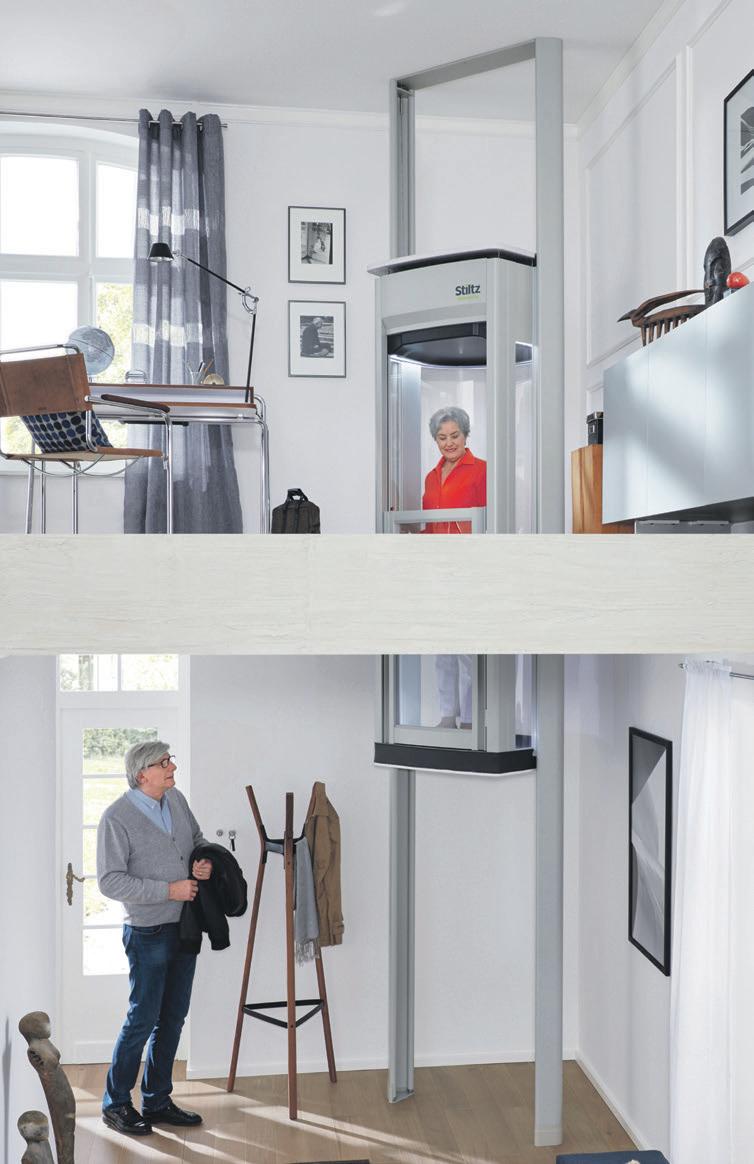




All ages can find something new and exciting around every corner of the state. Filled with rich history, abundant natural beauty and diverse events all year, Florida has something fun for everyone.
February 2-4
Annual Krewe of St. Andrews Mardi Gras Festival

The Krewe of St. Andrews invites you to Beck Avenue for three days of parades, lots of beads, food, drinks, music and vendors. A children’s parade is Friday, followed by the main parade Saturday and a pet parade Sunday. Bring the whole family because there’s something for everyone. standrewsmardigras.com; kosapcfl@gmail.com
February 8-10
Annual Fundraiser Variety Show and Silent Auction
Celebrate Marathon Community Theatre’s 80th birthday at this annual event. This fundraiser begins each night at 5 p.m. Actors, dancers and singers hit the stage at 7 p.m. to entertain and honor MCT’s history. Enjoy a complimentary smorgasbord and a free champagne toast after the curtain falls at 9 p.m. Tickets for the show are $45. marathontheater.org; 305-743-0408

January 27
Riverside Market
Making its debut in 2023, this market is making traction. Running every third Saturday, the market introduces the community to small local vendors and raises funds to invest in the community. Live music, food trucks and more are added to the market as it grows along the river at 299 Riverside Drive. www.facebook.com/RiversideMarket; 954-358-8333

February 10
37th Annual Civilian Conservation Corps Festival

The annual festival begins at 10 a.m. at Highlands Hammock State Park. This is the park’s signature event and showcases the park by celebrating history, art, nature and music. The festival includes guest speaker Gary Mormino, Florida Artist Blacksmith Association artisans, a silent auction, heritage demonstrators and a Cow Camp Reenactment by the Lake Kissimmee State Park.
floridastateparks.org/park/highlands-hammock; 850-245-2157
February 12-13
Florida Keys Concert Series
The Balourdet String Quartet is an energetic ensemble on a meteoric rise. Based in Boston, the young prize-winning group is in residence at the New England Conservatory’s Professional String Quartet Program. It is as exciting to watch as it is to hear. Concerts start at 7:30 p.m. in the Marathon High School auditorium. www.floridakeysconcerts.com; 800-324-6982







February 15
Nashville Live
Dave and Daphne are a dynamic duo who do it all. Their music includes classic country, Broadway, pop, Southern gospel, jazz and bluegrass. They perform at 7 p.m. at the South Lake Wales Church of God, 210 Presidents Drive. Tickets are $15. www.slwcog.com; 813-779-2174
February 17
Garden Walk
The Garden Club of the Upper Keys invites you to attend a garden walk from 10 a.m. to 4 p.m., rain or shine. Tickets are available online. Complimentary clubhouse activities include food trucks, vendors, artisans and shopping for plants. An art show is sponsored by the Art Guild of the Purple Isles. www.gardenclubupperkeys.org; 786-752-6562


February 19-20
Florida Keys Concert Series
Trio Con Brio Copenhagen consists of the Danish pianist Elvekjaer and South Korean sisters Soo-Jin Hong (violin) and Soo-Kyung Hong (cello). Recognized as one of the finest piano ensembles, they are touring artists, esteemed recording artists, artistic directors and educators. Concerts start at 7:30 p.m. in the Marathon High School auditorium. www.floridakeysconcerts.com; 800-324-6982
February 24
Florida River Fest
This festival is held in the heart of the Florida Panhandle at Neal Landing and highlights the river region with vendors, live entertainment and family fun. Gates open at 10 a.m. CST. Activities include Touch A Truck, live entertainment, a children’s zone and the River Dig. Shop nearly 100 vendors from across the Southeast or watch the boat parade. The entrance fee is $5 (cash only) at the gate. Children 5 and younger enter for free. In the evening, head to Bowles Field for the Rock the River Concert at 4:30 p.m., featuring Kendall Tucker, Dylan Kelley and Colt Ford. www.riverfestfl.com
February 24
Sombrero Beach Run


February 24

Orange Blossom Festival Rodeo

The Key West Southernmost Runners Club welcomes you to the 15th annual Sombrero Beach Run. This is the No. 1 running event of its kind in the Florida Keys. Kick off Friday night with a registration party at Sombrero Beach. Race day, be swept away with entertainment by DJ Tito, runners breakfast, after-race lunch, drinks, ice cold beer, custom T-shirts and raffles. Sunday activities include kayaking, barbecue and games. www.sombrerobeachrun.org; 305-743-4582
February 26-27
Florida Keys Concert Series
Each year, the series tries to highlight future stars of the classical music world. This year’s rising star is pianist Eric Lu, who won first prize at The Leeds International Piano Competition in 2018 at age 20. The following year, he signed an exclusive contract with Warner Classics and has since collaborated with some of the world’s most prestigious orchestras. Concerts start at 7:30 p.m. in the Marathon High School auditorium. www.floridakeysconcerts.com; 800-324-6982



A south Florida tradition now in it’s 87th year, the Orange Blossom Festival includes a parade, professional rodeo and other family activities. The rodeo is produced by the Weekley Brothers Davie Pro Rodeo and includes bull riding. www.davieprorodeo.org; 754-816-3183


Want to share a family-friendly event with the readers of Florida Currents? Enter the details at tinyurl.com/FloridaCurrents. Make sure to submit the item at least 60 days before the event (due to press deadline). If you own rights to a print-quality photo promoting your event—perhaps from a past year— include it with photo credit information.


Florida has more than 200 species of butterflies, some of which cannot be found anywhere else on Earth.
To attract these delicate creatures, your butterfly garden must provide food for the adult butterflies and their caterpillars. Though many butterflies will drink nectar from a variety of flowering plants, caterpillars are often limited as to which plants they can feed on.
Major Components of a Successful Butterfly Garden
• Adult nectar sources: attract and nourish adult butterflies.
• Larval host plants: attract ovipositing female butterflies and serve as a food source for developing larvae.
• Shelter: vegetation that provides protection from temperature extremes, storms/rain and predators, as well as locations for roosting/sleeping.
• Water source with fountain: allows for easy and consistent access to water for drinking and thermoregulation.
Garden Design
• Provide a combination of adult nectar sources and larval host plants. This attracts a variety of butterfly species; encourages butterflies to remain in your yard, reproduce and build populations instead of just passing through; and allows the gardener to appreciate all butterfly life stages.
• Incorporate native plants into the landscape whenever possible. Most larval host plants are natives. They’re adapted to the region, will produce a small but representative extension of the natural ecosystem and can attract other wildlife.
• Create horizontal and vertical diversity. Choosing plants that have different heights and growth habits creates numerous microclimates, which in turn appeal to a greater diversity of butterfly species, provides shelter and creates levels of feeding opportunities.
• Aim for a consistent host plant and floral venue throughout the growing season. Choose plants that have different blooming times. This ensures the garden remains attractive and productive as long as possible, and it provides food for butterflies during periods of low natural availability.
• Provide a number of different flower colors. Different butterfly species are attracted to different flower colors, so include yellow, orange, white, blue, red, pink and purple flowers.
• Provide a mix of flower shapes. The feeding behavior and proboscis length of a butterfly dictates which flowers will be visited. For example, long-tubed flowers are typically more accessible to species with long proboscis, whereas many composites (daisy-like flowers) provide a feeding platform and easy nectar accessibility for smaller species.
• Plant in shade as well as full sun. This appeals to more butterfly species. Many forest species prefer shadier locations.

• Plant in groupings. Groupings are aesthetically pleasing and provide masses of color. They are more apparent in landscape and allow larvae to locate additional food resources in a shortage.
• Choose appropriate plants for each location. Understand each plant’s basic water, light, and soil requirements so it can perform and grow to its maximum potential.
Select plants suitable for your landscape, and use pesticides carefully to avoid harming butterflies and other beneficial insects.
• Give new plants a good start: Water and mulch new plantings to ensure establishment.
• Fertilize: A regular fertilizing regimen will produce maximum growth and flower production.
• Avoid pesticide application when possible: All butterfly life history stages are sensitive to pesticides. Avoid Bacillus thuringiensis, and when a pest problem arises, treat it locally. Use beneficial insects/natural enemies.
• Learn to identify the butterfly species in your garden: This provides greater enjoyment and allows for the gardener to plant for particular local species.
The most obvious benefit of butterfly gardening is that it attracts wildlife, bringing butterflies and more into your garden for purposes of enjoyment, observation, study and photography.
However, there’s another important reason: ecosystem and habitat conservation.
A well-planned butterfly garden becomes a small but representative sample of the surrounding habitat and as such provides a haven for butterflies and other wildlife to gather, seek shelter, acquire food and water, reproduce, and build populations. Do not underestimate the importance of even a small garden.
Don’t discount the therapeutic benefits. Butterfly gardens provide a soothing retreat from everyday life. If you use herbs to attract butterflies, you’ll have the bonus of aromatherapy. n

Natasha Atlas graduated from the University of Florida’s Agricultural Education and Communication Program in 2021. Natasha loves writing about unique and new varieties of flowers and plants for the Neighborhood Gardener Newsletter and its 10,000 subscribers. When she isn’t writing, she enjoys tending her own garden on her balcony
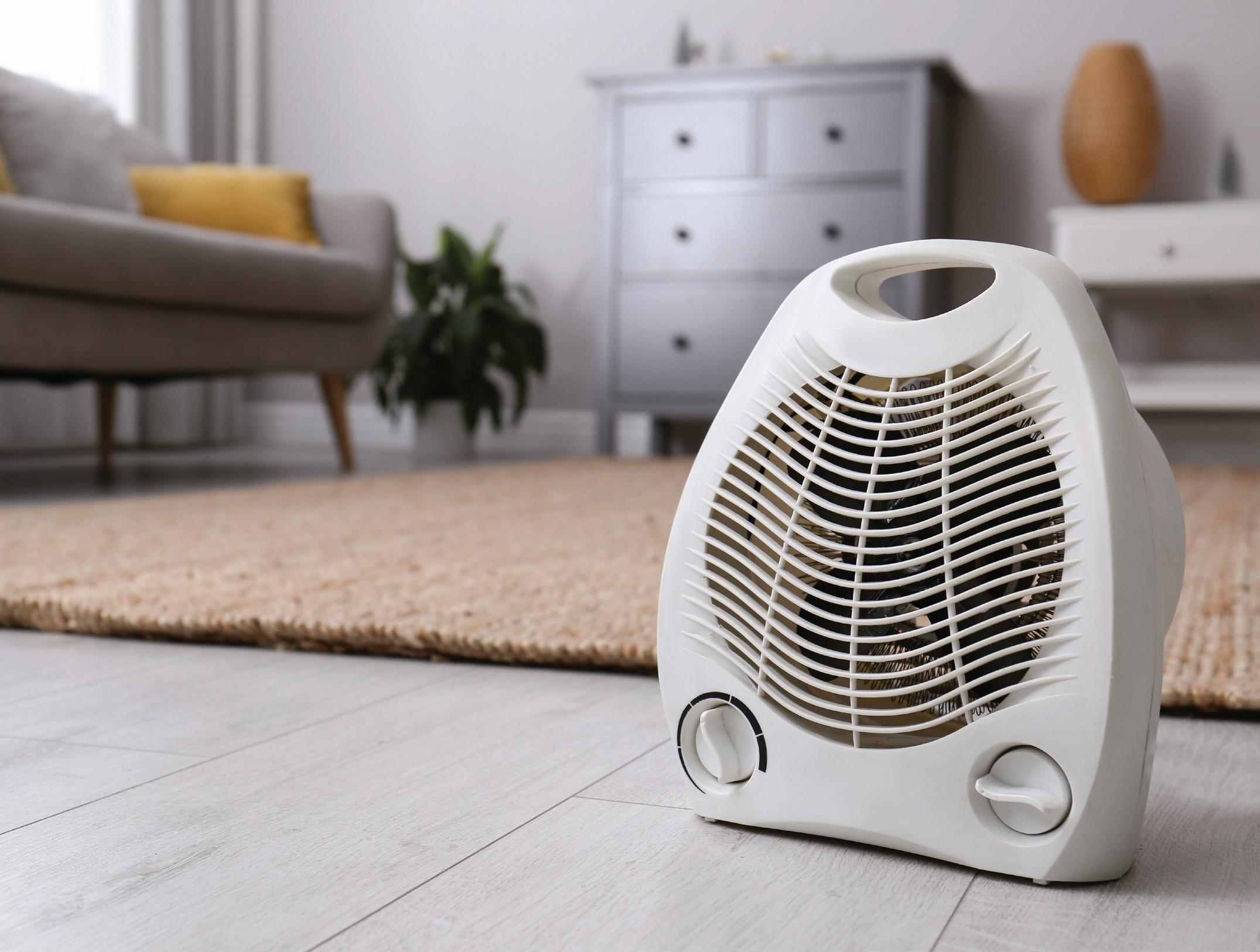
As winter’s icy grip tightens, many turn to space heaters for a quick burst of warmth. These handy appliances can be lifesavers but pose potential safety hazards if not used properly.
To ensure a cozy and fire-free season, follow these essential space heater safety tips.
• Maintain a 3-foot fireproof zone around your heater by keeping it away from curtains, furniture, bedding and even papers.
• Place your heater on a level, flat surface, away from anything that could tip it over. Avoid tables, counters and carpets.
• Don’t overload outlets. Plug your heater directly into a wall outlet. Do not use extension cords or adapters.
• Choose a heater certified by a well-known testing organization like UL or CSA.
• Buy a heater with an automatic shut-off feature for if it tips over.
• Look for a model with overheating protection to reduce fire hazard.
• Never leave your heater unattended. Turn off and unplug it when you leave the room or sleep.
• Keep children and pets away to avoid burns or accidental tipping.
• Don’t hang clothes or towels on your heater to dry.
• Clean your heater according to the manufacturer’s instructions to prevent dust buildup and ensure proper airflow.
• Install multiple smoke detectors, especially in or near bedrooms.
Follow these simple tips to enjoy warmth and comfort without compromising safety. n
By Miranda Boutelle
Q: I live in a manufactured home. How can I keep the inside temperature more comfortable and save on energy bills?
A: There are several tasks you can complete to improve comfort and use less energy in your manufactured home. I started my career in energy efficiency as a weatherization technician in Wisconsin. In this role, I helped people in manufactured homes by sealing ducts, adding insulation and installing new windows, showerheads, faucet aerators and lightbulbs.
More than 22 million Americans live in manufactured homes, according to the National Association of State Energy Officials. Manufactured homes represent 15% of housing in rural areas and 3% in urban areas.
Knowing how manufactured homes are built helps us understand where we can seal in savings around the house. These homes are built in factories, transported and then set up on-site. Construction in a factory reduces costs, making manufactured homes an affordable option. That lower price point can come, in part, from the use of less expensive equipment and fewer materials, such as lower-efficiency heating equipment or less insulation.
If you are considering buying a manufactured home, Energy Star-certified manufactured homes are 30% more energy efficient than standard models, with options that increase the home’s energy efficiency.
If you already live in one, you likely know manufactured homes are built in sections. One section is a singlewide home, two are combined to make a doublewide home and three make a triplewide home.
In my experience, the biggest issues are in the duct systems, which deliver heating and cooling throughout the homes. The ductwork is typically located in the cavity between the floor and the transport barrier, which protects the underside of the manufactured home while it is transported from the factory to the site. Typically, one long duct runs the length of each section of the home, with the
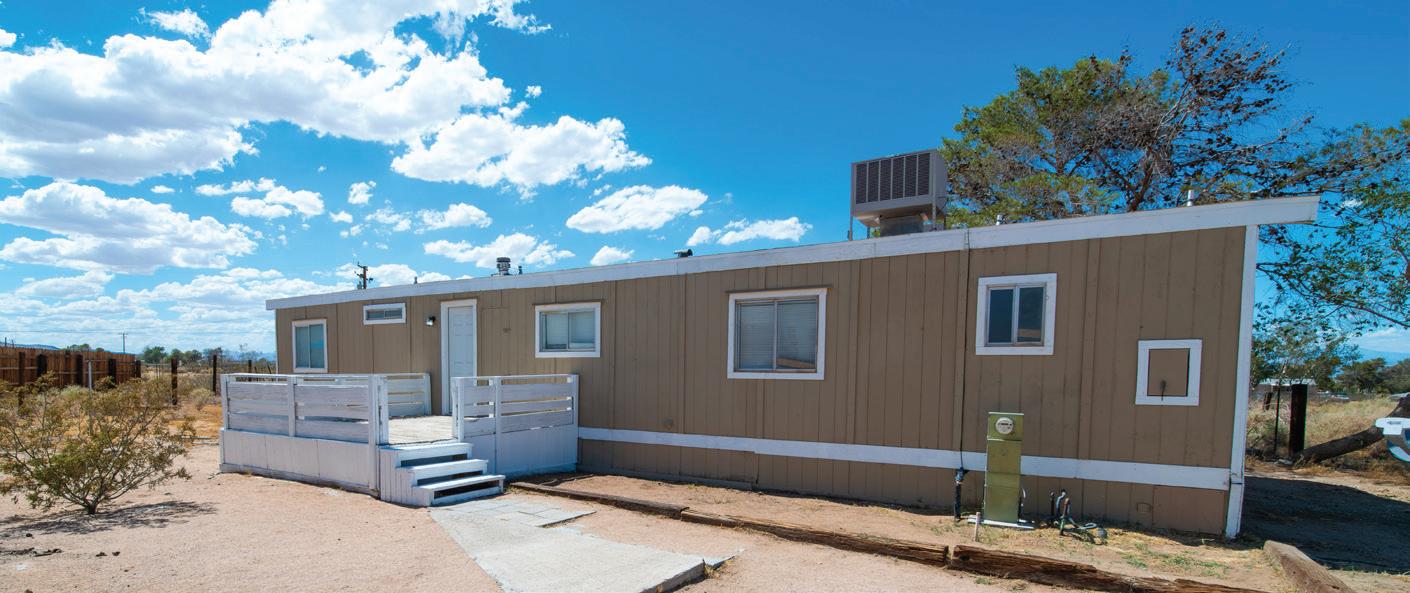
ABOVE: Manufactured homes are an important segment of housing, providing affordable living options particularly in rural areas. PHOTO BY BRIAN WANGENHEIM/ UNSPLASH RIGHT: Damaged or disconnected ducts allow the air you pay for to escape under the home. PHOTO COURTESY OF EFFICIENCY SERVICES GROUP
registers or vents cut into it.
The first step to improving efficiency is making sure all registers are accessible, open and not covered by furniture, rugs, dog beds or anything else.
Next, check your ductwork by removing the registers and looking inside. Anything inside the duct will restrict airflow, so check that it is free and clear. Use a mirror and flashlight to look into the duct or take a picture by sticking a camera or phone inside and snapping some shots with flash in each direction. I’ve pulled all kinds of things out of ducts over the years, from garbage to toys to shoes.
If you have a doublewide or triplewide, you will likely have a crossover duct, which joins the ducts in each section. The crossover duct is typically a large flexible duct with an inner liner, insulation and an outer cover to protect the insulation.
Damaged or disconnected crossover ducts allow the air you pay for to heat and cool your space to escape under the home. Often, damage is done by animals chewing or scratching to get inside the warm area. An inspection of the crossover duct requires crawling under the home. That’s a dirty job and often a tight spot, so you might choose to hire a professional.
Another place to check is the joint

connecting the sections of a doublewide or triplewide together. This is often covered by trim when the home is placed. You can caulk around the trim or remove it and caulk underneath to reduce air leakage.
Weatherstripping doors and windows to make sure they seal tightly will also reduce drafts and save energy. Some homes can benefit from additional insulation in the attic or under the floor. Those projects typically require specialized equipment or help from a professional.
Weatherization assistance programs, like the ones offered by the company I worked for in Wisconsin, provide discounted and no-cost energy-saving upgrades. Check with your county or electric utility for more information. n

Miranda Boutelle has more than 20 years of experience helping people save energy. She has worked on energyefficiency projects from the Midwest to the West Coast. Today, Miranda is chief operating officer at Efficiency Services Group in Oregon, a cooperatively owned energy-efficiency company.
This content was originally created by Efficiency Services Group LLC under contract with NRECA. NRECA retains ownership of this content. NRECA does not endorse Efficiency Services Group, its views herein expressed, nor any products or services it offers.








Flyers, satellite dishes, posters, basketball hoops, decorative lights, even hunting stands. You name it, someone has tried to staple, nail or tie it to a power pole. Here’s a quick look at the dangers and pitfalls associated with unauthorized pole attachments.
Many state and local laws and the National Electrical Safety Code prohibit any unauthorized items on poles. Utilities can face fines if these attachments aren't removed.
Even small holes can allow moisture and insects past the pole sealant, which can shorten the life of the pole or weaken it and cause it to fall in a storm.
Posters and flyers can hide identifying markers on poles and slow repair work.
Staples, tacks and nails can puncture a lineworker’s insulated rubber gloves and expose them to electric shock.
Objects can cause a worker to fall if they snag their boots.
Nails and tacks can impede climbing hooks from sinking into the wood.
A person who gets too close to energized lines while attaching an object can be electrocuted.
Some materials posted on poles, like mirrors or holiday decorations, can be a distraction to drivers.
At Peace River Electric Cooperative, confidentiality is important to us. As we strive to improve and expand our services, we recognize our members’ need and desire to preserve their privacy and confidentiality. PRECO recognizes the trust members place in us and is committed to safeguarding member information. The following policy affirms our continued commitment to preserving member confidentiality.
The Information We Collect. We receive and retain information about our members through many sources:
• Information we receive on member applications or other forms.
• Information on usage and data gathered by our metering systems.
• Information through member transactions with us, our affiliates or others.
• Information we receive from consumer-reporting agencies.
The Way We Use Information.We limit the use and collection of nonpublic personal information to that which is necessary to maintain and administer financial services. We do not share this information with outside parties unless:
• The information is provided to help complete a member-initiated transaction (such as credit reporting agencies, document processing companies, etc.).
• The member has requested it.
• The disclosure is required by law (e.g., subpoena, investigation of fraudulent activity, etc.).
• The disclosure is required by banking regulation (e.g., Fair Lending Reporting Act, Home Mortgage Disclosure Act, etc.).
When member information is provided to any of the third parties mentioned above, that third party must agree to adhere to privacy principles that provide for keeping such information confidential.
Limiting Employee Access to Information. PRECO limits employee access to member information to those with a business reason for knowing such information. All of our employees are educated on the importance of confidentiality and member privacy. Any employee who violates the financial privacy of our members is subject to appropriate disciplinary measures and possible termination.
Protection of Information Via Established Security Procedures. To prevent unauthorized access, maintain data accuracy and ensure the correct use of information, we have put in place appropriate physical, electronic and managerial procedures to safeguard and secure the information.
Maintaining Accurate Information. We have established procedures so our members’ financial information is accurate, current and complete in accordance with reasonable commercial standards. PRECO will respond to requests to correct inaccurate information in a timely manner.
Questions? At PRECO, we value our member relationships. We want you to understand how we use the information you provide and our commitment to ensuring your personal privacy. If you have questions regarding our privacy policy, please contact us at 800-282-3824.
Peace River Electric Cooperative is committed to providing meaningful access to its programs and services to persons who, as a result of their national origin, are identified as having Limited English Proficiency (LEP). We offer translation services, at no cost, to individuals belonging to identified LEP groups based on current demographics.
La Cooperativa Eléctrica Peace River se compromete a brindar un acceso significativo a sus programas y servicios a las personas que, como resultado de su origen nacional, se identifican como personas con dominio limitado del inglés (LEP). Ofrecemos servicios de traducción, sin algun costo, a personas que pertenecen a grupos LEP identificados según la demografía actual.
It is the policy of Peace River Electric Cooperative Inc. not to discriminate against any employee or applicant for employment because of race, color, religion, sex, sexual orientation, gender identity, national origin, age, marital status, genetic information, disability or because he or she is a protected veteran. It is also the policy of PRECO to take affirmative action to employ, and to advance in employment, all persons regardless of race, color, religion, sex, sexual orientation, gender identity, national origin, age, marital status, genetic information, disability or protected veteran status, and to base all employment decisions only on valid job requirements. This policy shall apply to all employment actions, including but not limited to recruitment, hiring, upgrading, promotion, transfer, demotion, layoff, recall, termination, rates of pay or other forms of compensation and selection for training, including apprenticeship, at all levels of employment.
Employees and applicants of PRECO will not be subject to harassment on the basis of race, color, religion, sex, sexual orientation, gender identity, national origin, age, marital status, genetic information, disability or because he or she is a protected veteran. Additionally, retaliation, including intimidation, threats or coercion, because an employee or applicant has objected to discrimination, engaged or may engage in filing a complaint, assisted in a review, investigation or hearing, or have otherwise sought to obtain their legal rights under any federal, state, or local EEO law is prohibited.
The general manager/CEO of PRECO is committed to the principles of affirmative action and equal employment opportunity. In order to ensure dissemination and implementation of equal employment opportunity and affirmative action throughout all levels of the company, the manager of human resources has been designated as the EEO manager for PRECO. One of the EEO manager’s duties will be to establish and maintain internal audit and reporting systems to allow for effective measurement of PRECO’s programs.
In furtherance of PRECO’s policy regarding affirmative action and equal employment opportunity, PRECO has developed a written affirmative action program which sets forth the policies, practices and procedures that PRECO is committed to in order to ensure its policy of nondiscrimination and affirmative action is accomplished. This affirmative action program is available in the human resources office for inspection by any employee or applicant for employment upon request, during normal business hours. Interested persons should contact the manager of human resources for assistance.
Romance should be a daily event. Of course, it’s nice to make a special day to shower your partner with gifts and a date on Valentine’s Day, but romance can easily be forgetten the other 364 days of the year.
Daily romance has you diving further into what makes your partner tick. Gifts then take the form of words, cleaning, tiny adventures, a coffee or a simple song.
Here are a few ideas to consider while keeping the love alive throughout the year:
• Shower your partner with compliments or thank-yous for things they do around the house or for you. Never underestimate a thank-you, even for the small things.
• Tiny adventures are a way to get out of the house without spending a lot of money. Find a nearby trail to hike; pack a picnic to take to the park; visit a bookshop and choose a book for each other; or take a day to experience a free museum.
• Are they a coffee or tea lover? Make them a random cuppa when you see they need a little pick-me-up.
• Speaking of needing a pick-me-up, if you see your partner is having a rough day or maybe a rainy day has brought them down,

throw on a song you know will make them smile.
Gifts don’t always need to be material. Sending someone a song in the middle of the day or leaving them a note by the front door goes miles in showing how much you care.

Photo © David Schrichte


Amemorable beach moment: You’re basking in the warm sun, toes in the sand, letting the gentle turn of the foam-capped waves lull you into a state of complete relaxation. As your eyes scan the endless horizon of blue on blue, you’re rewarded with a pod of dolphins making their way across the sea.
There’s no denying their signature shape as they leap from the water. If you don’t see anything else extraordinary the rest of day, you can take solace knowing you’ve witnessed one of nature’s most playful and human-like creatures in their natural habitat.

Why not re-create that special moment with our Balinese Dolphin Pendant? We’ve captured two dolphins midjump in sterling silver crafted in the Balinese style. Tucked between these beloved sea mammals is a full carat of shimmering blue topaz. Made by some of Indonesia’s finest artisans, this pendant is an absolute steal at JUST $29! That’s what we call our Stauer IMPOSSIBLE PRICE!
Nothing captures the shimmering color of the ocean in the midday sun like blue topaz. With its sparkling, clear blue color and high reflective index, blue topaz is one of the world’s top-selling gemstones. The Gemological Institute of America lauds topaz for its hardness, noting that blue topaz is known for its intense color that’s better than aquamarine. With this special price, you can score quite the catch.



Satisfaction guaranteed or your money back. Enjoy the Balinese Dolphin Pendant for 30 days. If it doesn’t pass the test swimmingly, send it back for a full refund of the item price.
Limited reserves. This pendant is already one of our best sellers this year. A full carat of genuine blue topaz set in .925 sterling silver for this price is as rare as a dolphin sighting. We cannot guarantee availability for long. Call today! This offer is limited to the first 1,900 responders to this ad!
Jewelry Specifications:
• Made in Indonesia
• Blue topaz and .925 sterling silver
Balinese Dolphin Pendant (1 carat)
$299 $29* + S&P Save $270
*Special price only for customers using the offer code.

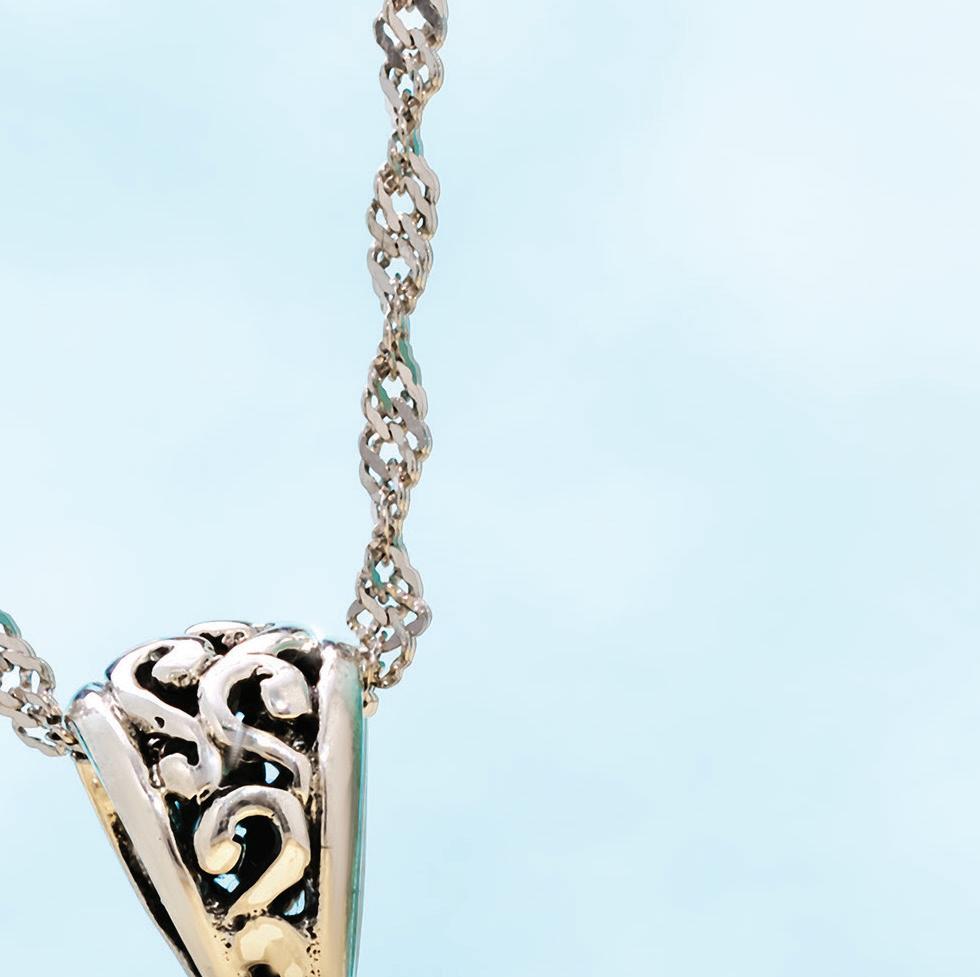



One carat of shimmering blue topaz set in sterling silver for only $29

What Stauer Clients Are Saying About Our Topaz
“Just lovely! Would recommend it as a purchase. Thank you STAUER.” — Mary L.




PRECO.coop
800-282-3824
TO REPORT A POWER OUTAGE
Use the SmartHub app.
Text OUT to 800-282-3824.
Call 800-282-3824.
CORPORATE HEADQUARTERS
210 Metheny Road Wauchula, FL 33873
MANATEE SERVICE CENTER
14505 Arbor Green Trail
Lakewood Ranch, FL 34202
BOARD OF DIRECTORS
District 1
LEONARD CRAWLEY
District 2
KENNETH ODEN
District 3
BRUCE VICKERS
District 4
HOLLIS ALBRITTON
District 5
MARIE DASHER
District 6
JOHN MARTIN
District 7
CHRIS PORTALE
District 8
ELLEN BACHMAN
District 9
WILLIE DAWES
BOARD MEETINGS
February 27, 2024
March 26, 2024
April 30, 2024
Any PRECO member may attend board meetings. Due to building security requirements and to facilitate attendance, members should contact the cooperative in a timely manner for logistical information regarding meetings.
Prefer to receive Florida Currents online?
Sign up through your online account or call us at 800-282-3824
CEO Message
Colder weather typically results in higher energy bills. To help you avoid financial frostbite, I want to share a valuable co-op resource to help you stay warm and cozy without sacrificing your budget: a free home energy audit offered by Peace River Electric Cooperative.
Think of an energy audit like a checkup for your home. A trained energy adviser will visit your home, looking for hidden energy leaks and suggesting ways to improve efficiency.
A home energy audit can determine the overall efficiency of your home or business and ways to improve it. Here are the main benefits of conducting an energy audit.
An audit will identify where most of your energy use is going and ways to use energy more efficiently to save money.
It can determine if appliances and heating/cooling equipment are properly sized for the home or business.
They’ll examine everything from windows and doors to major appliances and insulation levels.
The adviser will also conduct thermal imaging of the home to detect heat loss that is invisible to the naked eye. Thermal imaging can reveal inadequate insulation levels, HVAC airflow, radiant heat malfunction and other key factors.
The best part? With a free energy audit, it’s like having your own personal energy detective uncovering ways to save you money.
But the benefits go beyond immediate savings. Understanding how your home uses energy empowers you to make informed choices about your energy consumption. This knowledge can lead to long-term cost reductions and, by making changes, may even increase your property value.
Making the most of this service is simple:
• Contact PRECO to schedule your free audit.
• Work with your energy adviser to discover your energy use habits.
• Receive your detailed report with personalized recommendations.
• Start implementing the suggestions and watch your energy bills shrink. Ready to get started? Request an energy audit by calling our Customer Care Department at 800-282-3824.
Free energy audits are just one of the many perks of being a member of PRECO. If you’re looking for more ways to save, check out PRECO.coop/energy/saving.
